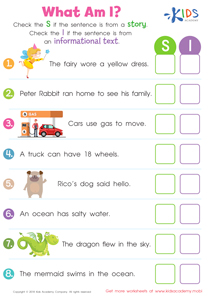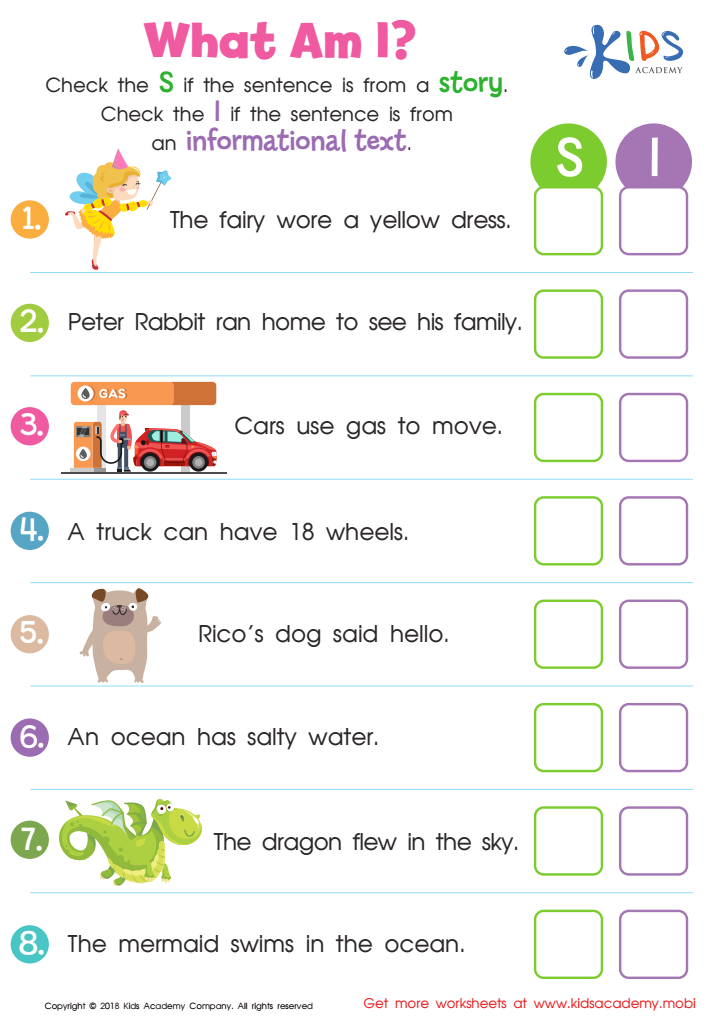Compare and Contrast Fiction and Nonfiction - Lesson for Grade 1, Chapter - Integration of Knowledge and Ideas
In the lesson "Compare and Contrast Fiction and Nonfiction," first-grade students embark on an engaging journey to distinguish between these two fundamental genres of literature. This lesson is a pivotal part of the "Integration of Knowledge and Ideas" chapter within the "Reading Literature" unit, designed to enrich students' comprehension and analytical skills from an early age.
Throughout this lesson, students will learn the key characteristics that define fiction and nonfiction texts. Through the "What Am I? Worksheet" activity, they will apply their knowledge by categorizing different examples of texts, thereby reinforcing their understanding. This hands-on approach not only makes learning fun but also ensures that students can confidently identify whether a book, article, or story is based on real-life facts or if it's a product of the author's imagination.
Understanding the difference between fiction and nonfiction is crucial as it lays the groundwork for critical reading skills. It helps students develop a keen eye for detail, enhances their ability to analyze and interpret information, and fosters a deeper appreciation for literature.

-
Activity 1 / What Am I? Worksheet
There is a big difference between fictional stories and informational texts. This worksheet will check your student’s ability to differentiate between a story and a text read for information. Students learn that they read sometimes for fun and entertainment and sometimes for information and facts. This printable gives the student statements to read from a story and statements from an informational text and the student chooses what type of text it is.


